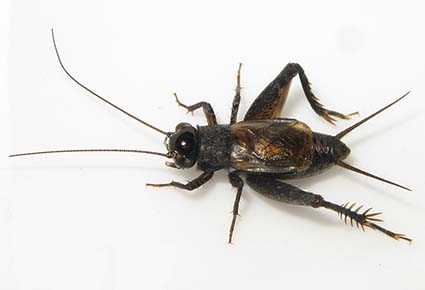Abstract
We studied the relationship of the genera Loxoblemmus Saussure, 1877 and Asonicogryllus He, 2019 by reconstructing the phylogenetic tree based on 2 mitochondrial genes and 2 ribosomal genes. The result shows that Loxoblemmus is paraphyletic. Thus, we place Asonicogryllus as a subgenus of Loxoblemmus. Meanwhile, we report a new species of Asonicogryllus, L. (A.) bronzus He sp. nov. The new species is similar to L. (A.) kwanghua, but it has well developed forewings and hindwings. The type specimens are deposited in the Museum of Biology, East China Normal University (ECNU).
References
Cigliano, M.M., Braun, H., Eades, D.C. & Otte, D. (2021) Orthoptera Species File. Version. 5.0. Available from: http:// Orthoptera.SpeciesFile.org (accessed 17 August 2021)
Giribet, G., Carranza, S., Riutort, M., Baguna, J. & Ribera, C. (1999) Internal phylogeny of the Chilopoda (myriapoda, arthropoda) using complete 18s rdna and partial 28s rdna sequences. Philosophical Transactions of the Royal Society of London Series B-Biological Sciences, 354 (1380), 215–222. https://doi.org/10.1098/rstb.1999.0373
Guindon, S., Dufayard, J.F., Lefort, V., Anisimova, M., Hordijk, W. & Gascuel, O. (2010) New algorithms and methods to estimate maximum-likelihood phylogenies: assessing the performance of PhyML 3.0. Systematic Biology, 59, 307–321.
https://doi.org/10.1093/sysbio/syq010
He, Z.-Q. (2018) A checklist of Chinese crickets (Orthoptera: Gryllidea). Zootaxa, 4369 (4), 515–535. https://doi.org/10.11646/zootaxa.4369.4.4
He, Z.-Q., Shen, C.-Z., Wu, X., Chen, L. & Li, K. (2020) Report of a new genus Mirigryllus belonging to tribe Modicogryllini, with a new species M. nigrus from Zhejiang, China (Orthoptera: Gryllidae: Gryllinae: Modicogryllini). Zootaxa, 4869 (1), 112–120. https://doi.org/10.11646/zootaxa.4869.1.5
Jarvis, K.J., Haas, F. & Whiting, M.F. (2004) Phylogeny of earwigs (Insecta: Dermaptera) based on molecular and morphological evidence: reconsidering the classification of Dermaptera. Systematic Entomology, 30 (3), 442–453. https://doi.org/10.1111/j.1365-3113.2004.00276.x
Kalyaanamoorthy, S., Minh, B.Q., Wong, T.K.F., von Haeseler, A. & Jermiin, L.S. (2017) ModelFinder: fast model selection for accurate phylogenetic estimates. Nature Methods, 14, 587–589. https://doi.org/10.1038/nmeth.4285
Liu, Y.-F., Shen, C.-Z., Zhang, L. & He, Z.-Q. (2019) A new genus of cricket with one new species from western Yunnan, China (Orthoptera: Gryllidae: Gryllinae). Zootaxa, 4577 (2), 393–394. https://doi.org/10.11646/zootaxa.4577.2.12
Ma, L.B., Jing, X. & Zheng, Y.N. (2021a) Integrative taxonomy base on morphology and molecular phylogeny with description of a new genus, Progoniogryllus gen. nov. and two new species (Orthoptera: Grylloidea: Gryllidae; Gryllinae). Zootaxa, 4995 (3), 523–536. https://doi.org/10.11646/zootaxa.4995.3.7
Ma, L.B., Zheng, Y. & Qiao, M. (2021b) Revision of Chinese crickets of the tribe Modicogryllini Otte & Alexander, 1983 with notes on relevant taxa (Orthoptera: Gryllidae; Gryllinae). Zootaxa, 4990 (2), 227–252. https://doi.org/10.11646/zootaxa.4990.2.2
Minh, B.Q., Nguyen, M.A. & von Haeseler, A. (2013) Ultrafast approximation for phylogenetic bootstrap. Molecular Biology And Evolution, 30, 1188–1195. https://doi.org/10.1093/molbev/mst024
Nguyen, L.T., Schmidt, H.A., von Haeseler, A. & Minh, B.Q. (2015) IQ-TREE: a fast and effective stochastic algorithm for estimating maximum-likelihood phylogenies. Molecular Biology and Evolution, 32, 268–274. https://doi.org/10.1093/molbev/msu300
Otte, D. (1992) Evolution of cricket songs. Journal of Orthoptera Research, 1, 25–49. https://doi.org/10.2307/3503559
Pan, C Y., Hu, J., Zhang, X. & Huang, Y. (2006) The DNA barcoding application of mtDNA COI gene in seven species of Catantopidae (Orthoptera). Entomotaxonomia, 28, 103–110
Simmons R. B. & Weller S. J. (2001) Utility and volution of cytochrome b in insects. Molecular Phylogenetics and Evolution, 20 (2),196–210. https://doi.org/10.1006/mpev.2001.0958
Walker, T.J. & Masaki, S. (1989) 1. Natural History. In: Huber, F., Moore, T. & Loher, W. (Ed.), Cricket Behavior and Neurobiology. Cornell University Press, Ithaca, New York, pp. 1–42. https://doi.org/10.7591/9781501745904-003
Whiting, M.F. (2002) Mecoptera is paraphyletic: multiple genes and phylogeny of Mecoptera and Siphonaptera. Zoologica Scripta, 31 (1), 93–104. https://doi.org/10.1046/j.0300-3256.2001.00095.x
Zhang, D., Gao, F.L., Jakovlić, I., Zou, H., Zhang, J., Li, W.X. & Wang, G.T. (2020) PhyloSuite: An integrated and scalable desktop platform for streamlined molecular sequence data management and evolutionary phylogenetics studies. Molecular Ecology Resources, 20 (1), 348–355. https://doi.org/10.1111/1755-0998.13096
Zuk, M., Rotenberry, J.T. & Tinghitella, R.M. (2006) Silent night: adaptive disappearance of a sexual signal in a parasitized population of field crickets. Biology Letters, 2 (4), 521–524. https://doi.org/10.1098/rsbl.2006.0539


